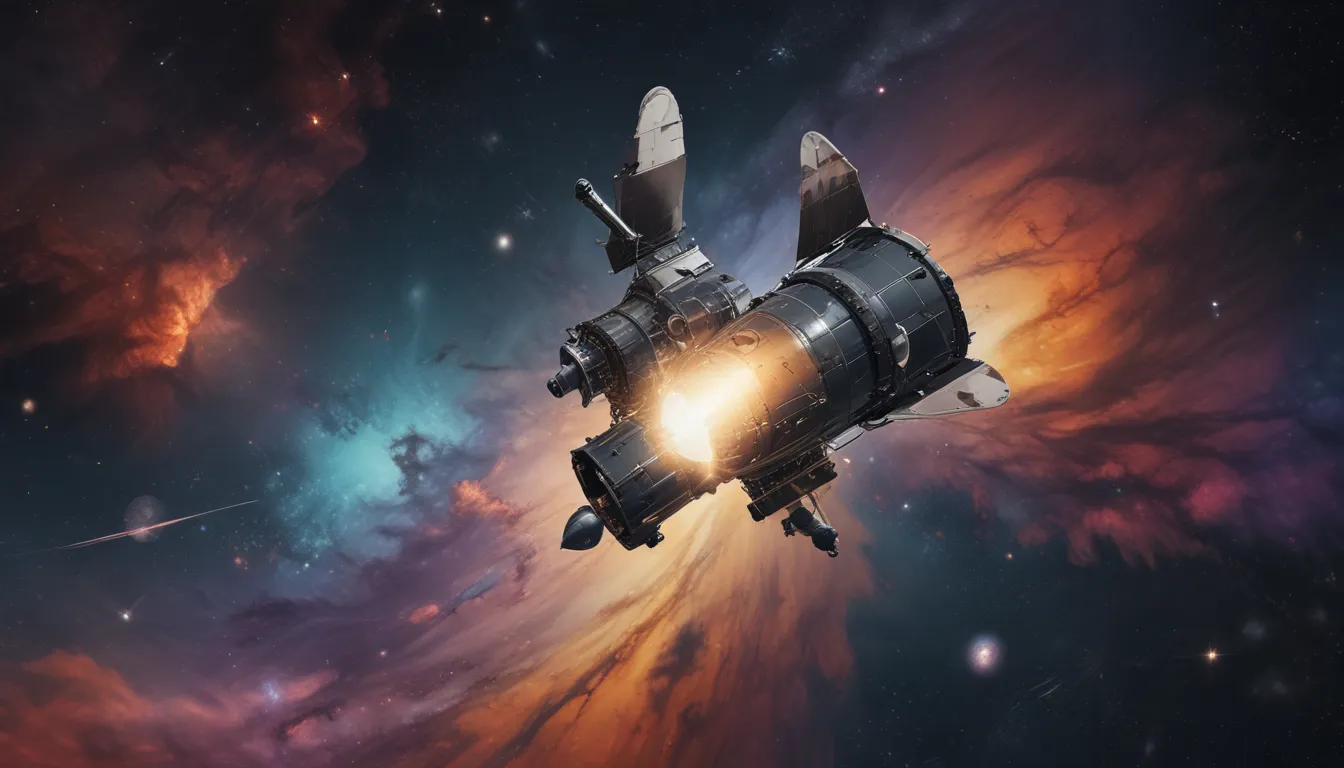The pictures we use in our articles might not show exactly what the words say. We choose these pictures to make you interested in reading more. The pictures work together with the words but don’t take their place. The words still tell you the important facts.
Are you ready to embark on a cosmic journey through space and unravel the secrets of the universe with the iconic Hubble Space Telescope? Since its launch in 1990, this remarkable technological marvel has provided us with breathtaking images and invaluable scientific data, revolutionizing our understanding of the vast universe beyond our planet. In this article, we will delve into 10 intriguing facts about the Hubble Space Telescope that will leave you astounded. From its initial setbacks to its extraordinary accomplishments, we will explore the wonders and discoveries made possible by this space observatory. So buckle up and prepare to be amazed as we unravel the mysteries of the cosmos!
Key Takeaways:
- The Hubble Space Telescope, named after astronomer Edwin Hubble, has captured stunning images of distant galaxies and helped refine our understanding of the universe’s age.
- Despite a flawed mirror at launch, the Hubble Space Telescope has made over 1.4 million observations and is expected to remain operational until the 2030s, continuing to unravel the mysteries of the cosmos.
Journey of the Hubble Space Telescope
1. Launch and Naming:
The Hubble Space Telescope, also known as HST, was launched into space on April 24, 1990, by the Space Shuttle Discovery. Named after astronomer Edwin Hubble, who made significant contributions to our understanding of galaxies and the expansion of the universe, the telescope serves as a tribute to his pioneering work in the field of astrophysics.
2. Size and Weight:
Despite its monumental capabilities, the Hubble Space Telescope is surprisingly compact, measuring approximately 43.5 feet (13.2 meters) long, about the size of a large school bus. With a weight of around 24,500 pounds (11,100 kilograms), it houses an intricate system of instruments, mirrors, and components necessary for its groundbreaking observations.
Unveiling the Mysteries of the Universe
3. Capturing Distant Galaxies:
One of the Hubble Space Telescope’s most remarkable achievements is its ability to capture breathtaking images of galaxies located billions of light-years away. These images provide scientists with invaluable insights into the formation and evolution of galaxies throughout the history of the universe.
4. Mirror Flaw and Correction:
During its development, a significant flaw was discovered in the Hubble Space Telescope's primary mirror, affecting its focusing capabilities. However, a servicing mission in 1993 successfully corrected the mirror's defect, allowing Hubble to achieve its full potential and capture stunning images with unparalleled clarity.
Contributing to Scientific Knowledge
5. Refining the Age of the Universe:
By observing distant stars and galaxies, the Hubble Space Telescope has played a crucial role in refining our understanding of the age of the universe. Its measurements have contributed to determining the current estimate of the universe's age to be approximately 13.8 billion years.
6. Observations and Operational Lifespan:
Since its launch, the Hubble Space Telescope has made over 1.4 million astronomical observations, contributing to countless scientific discoveries and expanding our knowledge of the universe. Despite its age, NASA has projected that the telescope will remain operational until the 2030s, continuing to unravel the mysteries of the cosmos.
Glimpses into Space Exploration
7. Orbit and Speed:
The Hubble Space Telescope orbits Earth at a speed of about 17,500 mph, completing a orbit approximately every 97 minutes. This remarkable speed allows it to constantly observe different regions of space without being limited by the Earth's rotation, capturing a wide range of celestial phenomena.
8. Groundbreaking Discoveries:
Through its observations, the Hubble Space Telescope has made numerous groundbreaking discoveries, including determining the rate of the universe's expansion, finding evidence for the existence of dark energy, and capturing detailed images of planets outside our solar system. These discoveries have reshaped our understanding of the cosmos.
Conclusion
In conclusion, the Hubble Space Telescope stands as a testament to human ingenuity and technological advancements, revolutionizing our understanding of the universe. From its awe-inspiring images of distant galaxies to its valuable data on the age and expansion of the universe, Hubble has significantly contributed to our knowledge of space. As we look towards the future, we anticipate further developments that will enhance our exploration and understanding of the vast expanse of the universe.
FAQs
Q: What is the purpose of the Hubble Space Telescope?
A: The Hubble Space Telescope is primarily used to observe and study astronomical objects, including galaxies, planets, stars, and nebulae, contributing to various fields of astrophysics.
Q: How far can the Hubble Space Telescope see?
A: The Hubble Space Telescope can capture images of objects located billions of light-years away, allowing scientists to study the universe's early stages and gain insights into its evolution.
Q: What are some of the significant discoveries made by the Hubble Space Telescope?
A: The Hubble Space Telescope has made numerous discoveries, including determining the rate of the universe's expansion, finding evidence for dark energy, and capturing images of planets outside our solar system.
Q: Can the general public access Hubble's images?
A: Yes, the Hubble Space Telescope provides free access to its library of images and data, allowing anyone to explore and download these stunning visuals through various platforms and websites.
Prepare to be astounded by the wonders of the Hubble Space Telescope as it continues to unveil the mysteries of the universe, inspiring awe and curiosity in space enthusiasts worldwide. Join us on this cosmic journey and let your cosmic curiosity soar as we explore the depths of the cosmos with this iconic space observatory.






